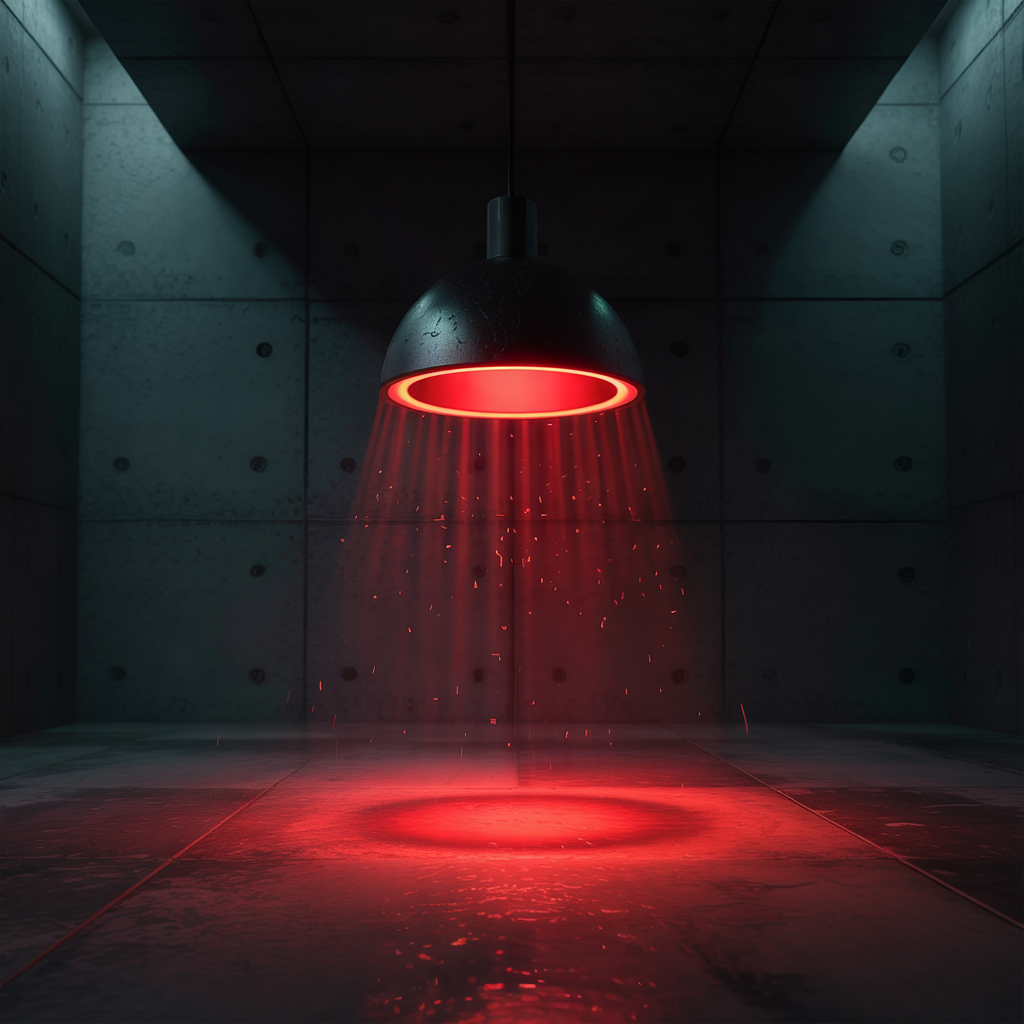What Do Red LED Lights Mean? The Real Life Answer
What do red LED lights mean? Red LED lights often symbolize passion, energy, or alertness. In practical use, they serve night vision, emergency, or warning purposes due to their visibility and low light disturbance. Some also use red LEDs for relaxation or sleep routines, as red light minimally disrupts melatonin production. A Light Emitting Diode…
What do red LED lights mean? Red LED lights often symbolize passion, energy, or alertness. In practical use, they serve night vision, emergency, or warning purposes due to their visibility and low light disturbance. Some also use red LEDs for relaxation or sleep routines, as red light minimally disrupts melatonin production.
A Light Emitting Diode (LED) is a semiconductor device that emits light when an electric current passes through it. Unlike traditional incandescent bulbs that produce light through heat, LEDs convert electrical energy directly into light, making them much more energy-efficient and longer-lasting.
What Do Red LED Lights Mean?
Why Red?

The color of an LED is determined by the semiconductor material used in its construction. Red LEDs are particularly common because they were among the first LEDs developed and are relatively inexpensive to manufacture. The specific wavelength of red light emitted can vary slightly depending on the material and manufacturing process.
Read More: Do LED Lights Help Plants Grow? A Comprehensive Guide To Boosting Plant Growth
Red LEDs in Everyday Electronics
Power Indicators
One of the most frequent uses of red LEDs is as power indicators. A steadily lit red light often signifies that a device is turned on and receiving power. Examples include chargers, routers, and many consumer electronics. A flashing red light might indicate a problem, such as low battery or overheating. Different patterns will vary across devices.
Error Messages
A blinking or flashing red light frequently serves as a warning of an error or malfunction. This is common in computers, appliances, and even vehicles. The exact meaning of the flashing pattern may be documented in the device’s manual. For instance, a rapidly blinking red light on a router could signal a connection problem, while a slow blink could indicate a software issue.
Status Indicators
Beyond simple on/off indications, red LEDs can communicate more complex status updates. For example, a red light on a security system might indicate a triggered alarm, or a red light on a camera could show that recording is in progress. Different colors and patterns can work in tandem to indicate different situations.
Red LEDs in Advanced Technology

Network Devices
In networking equipment like routers and switches, red LEDs play a crucial role in indicating network status. A solid red light might signify a link failure, while a blinking red light could indicate network congestion or a problem with a specific port. Understanding these indicators helps troubleshoot network issues.
Industrial Applications
Red LEDs are heavily utilized in industrial settings, often as part of safety systems. They might signal the presence of hazardous materials, equipment malfunctions, or potential dangers. The bright visibility of red makes it ideal for safety alerts where immediate attention is required.
Medical Equipment
Red LEDs find their place in medical devices, such as blood pressure monitors, pulse oximeters, and other diagnostic tools. They serve as visual cues for operation status and potential alarms. The exact meaning varies across specific devices.
Read More: 15 Creative Angled Ceiling Lighting Ideas to Brighten Up Sloped Spaces
Interpreting Red LED Patterns

Solid Red Light
A consistently lit red light generally implies that the device is powered on and operating normally, or that a specific function is active. However, always check the device’s manual for specific definitions.
Flashing Red Light
A flashing red light usually signifies a warning or error condition. The frequency and pattern of the flash can often convey more specific information. Refer to the device documentation to decipher the specific meaning.
Slow Blinking Red Light
Similar to a flashing red light, a slow blink can point to a problem or alert. The pace of the blink might indicate the type or severity of the issue, yet manual consulting will still be needed.
Rapid Blinking Red Light
A rapidly blinking red light often indicates a critical error or a serious malfunction requiring immediate attention. This might signal the need for troubleshooting or professional assistance.
Understanding the Technology Behind Red LEDs
Semiconductor Materials
Red LEDs are typically made from gallium arsenide phosphide (GaAsP) or aluminum gallium indium phosphide (AlGaInP). These materials emit red light when electrons move from a higher energy level to a lower energy level within their crystal structure.
Wavelength and Intensity
The wavelength of the red light emitted by an LED is directly related to the energy difference between the energy levels in the semiconductor material. The intensity of the light is controlled by the amount of current passing through the LED.
Benefits of Using Red LEDs
Energy Efficiency
LEDs are significantly more energy-efficient than traditional incandescent bulbs, consuming far less energy to produce the same amount of light. This translates to lower energy bills and reduced environmental impact.
Longevity
LEDs have a much longer lifespan than incandescent bulbs. They are less susceptible to burnout and can last for thousands of hours of operation.
Compact Size
LEDs are small and compact, making them easy to integrate into a wide range of devices and applications.
Durability
LEDs are generally robust and resistant to shock and vibration, enhancing their reliability in various environments.
Limitations of Red LEDs
Color Temperature
While red LEDs offer vibrant red hues, they can’t produce a range of colors like white LEDs or other light sources. Color temperature depends on the specific semiconductor materials.
Brightness Variation
The brightness of an LED can fluctuate depending on the applied voltage and the ambient temperature. Proper heat management may be necessary in certain applications.
Heat Generation
Although energy-efficient compared to incandescent, LEDs do generate some heat, albeit lesser than incandescent bulbs. Proper heat sinking or management can extend the lifespan.
Comparing Red LEDs with Other Indicators
Red LEDs vs. Incandescent Bulbs
Red LEDs have a clear advantage over incandescent bulbs in terms of energy efficiency, longevity, and durability. However, incandescent bulbs can offer a warmer, softer light in some situations. This is especially true in a visual aspect where LEDs could appear more stark.
Red LEDs vs. Other Color LEDs
Different colors of LEDs serve different purposes. Red is commonly used for warnings and alerts, while other colors like green or blue might indicate different status conditions. This choice depends heavily on context and industry standards.
Frequently Asked Questions
What is the typical lifespan of a red LED?
The lifespan of a red LED can vary depending on the manufacturing quality and operating conditions. However, many red LEDs are rated for tens of thousands of hours of operation.
How do I troubleshoot a device with a flashing red light?
The first step is to consult the device’s manual, which should contain a list of error codes and their meanings. If the manual doesn’t offer a solution, you might try restarting the device, checking connections, or seeking help from a technician.
Are red LEDs safe for human eyes?
Most red LEDs are safe for human eyes at normal operating intensities. However, prolonged exposure to high-intensity red light can potentially damage the eyes. It’s crucial to follow the safety guidelines provided by the manufacturer.
Can I replace a red LED myself?
Replacing an LED can be challenging and depends heavily on the specific device. In some cases, it is a simple matter of unsoldering the old LED and soldering in a new one. However, for more complex devices, it’s best to consult a professional.
What are the environmental benefits of using red LEDs?
Since LEDs consume less energy, their production leads to a lower carbon footprint. Their longevity reduces the need to constantly replace components, lessening waste in landfills.
How does the intensity of a red LED relate to its function?
In many cases, the brightness of a red LED is directly related to its function. A bright red light could indicate a critical warning, whereas a dimmer light might signal a less urgent condition. However, this relationship isn’t consistent across all applications.
Final Thoughts
Understanding the meaning of red LED lights is crucial in various contexts. From the simple power indicators on everyday electronics to the complex signaling in industrial settings, red LEDs provide vital visual cues. We’ve covered the basics of LED technology, explored the common meanings of red LEDs in different applications, and highlighted their benefits and limitations. Learning to interpret these visual signals enhances your ability to troubleshoot problems, interpret warnings, and better understand the operation of many devices you encounter daily. Whether it’s a blinking red light on your router or a steady red light on a medical device, grasping the significance of these lights helps improve your understanding of how these devices communicate with you. Remember to always consult the device’s manual for specific explanations.

